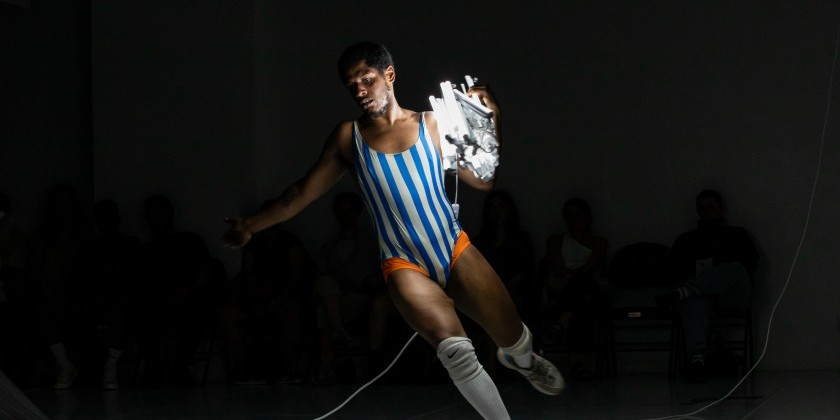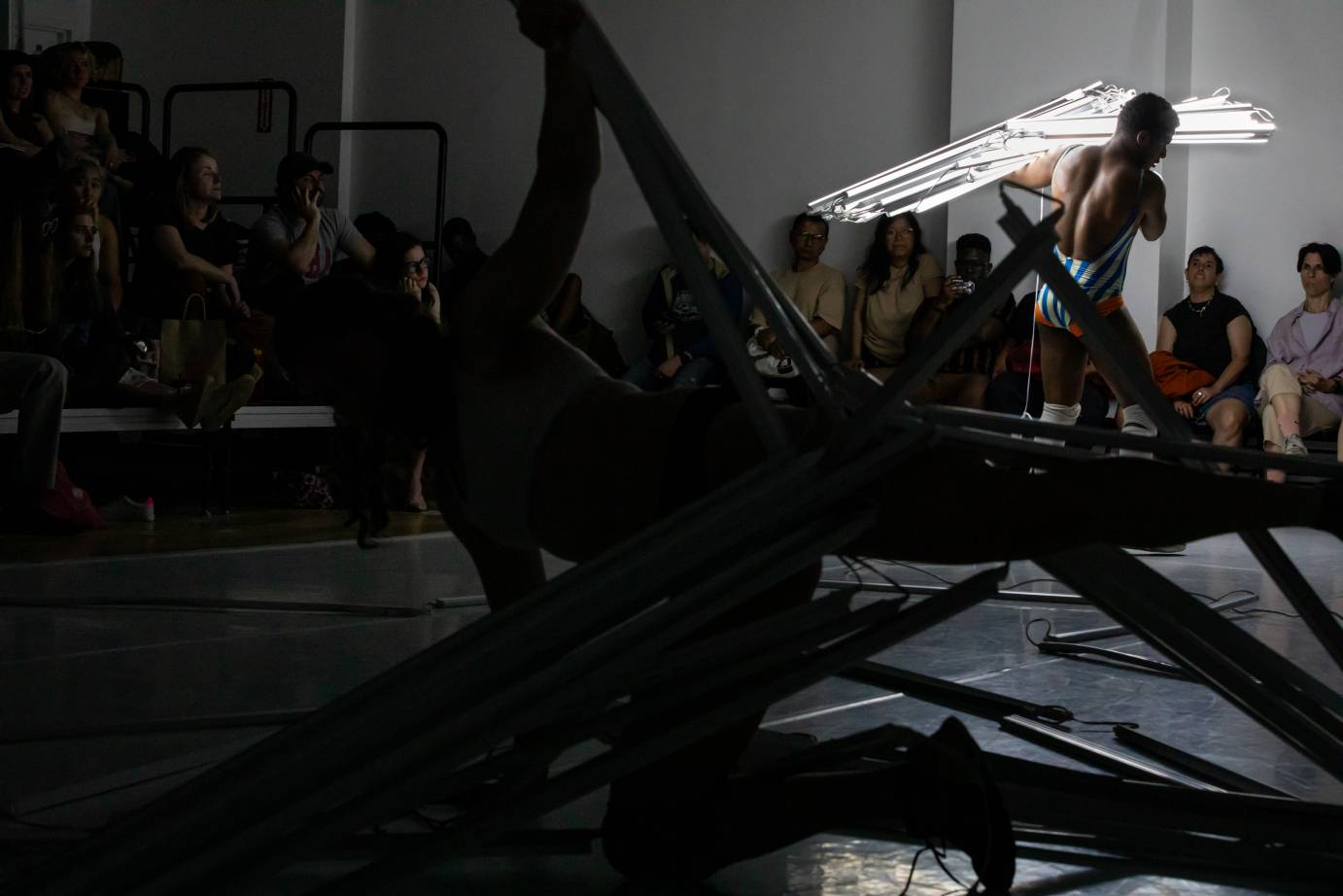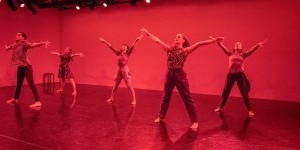IMPRESSIONS: Malcolm-x Betts Presents "what happens when things become undone?" at CPR

An Improvisational Duet on Blackness, Abstraction, Love and Grief
Choreographer: Malcolm-x Betts presents what happens when things become undone?, an improvisational duet on Blackness, abstraction, love, and grief
Performers: Malcolm-x Betts and Ella Dawn W-S
Venue: CPR – Center for Performance Research
Date: May 21, 2024
In silence Malcolm-x Betts and Ella Dawn W-S lightly touch as they struggle to balance. Their bodies are close, and the shapes of their bodies, often with one leg in back attitude while slowly revolving, respond in like-shapes to the other. Except for the spot lit couple, the lighting at CPR – Center for Performance Research in Brooklyn, is dim. He, bare-chested, wears a bright orange Speedo, knee pads, long white socks, and sneakers (later to don a blue and white striped bathing suit), while she is dressed in black underwear, light-colored sports bra, a pad on her right knee, and sneakers. Thus begins Malcolm-x Betts’ multi-scene 60m work, what happens when things become undone? an improvisational duet on Blackness, abstraction, love and grief.

The two pull on Betts’ signature Basquiat-inspired painted sweatpants and sweatshirts (Betts sells his painted clothes online), separate and shift places in the room. Their rhythmic footfalls and sneaker squeaks provide the accompanying sound. She stretches and turns on her knee (the padded one) while he stretches long and lunges. They take turns executing big movement. A silky and beautifully controlled mover, W-S retreats to the wall where she lies down and puts her feet up. He joins her. A lozenge of light folds at the meeting of floor and wall that illuminates her climb on his back. He rises without her, and with the footwork of a prize fighter, abstractly jabs and weaves. As he drops into a deep shape to the floor, she opens a hanging bundle of slats that resemble window blinds. In the ensuing blackout, the many slats light up in strobe and make loud scraping sounds as they’re banged on the ground or regathered and rolled. The dancers run and hop vigorously in and out of the slats.
Retreating to a corner area secreted by long cream-colored hanging scrolls on which are writ stories and poetry that resemble journal entries, they lean close together. Breathing heavily into microphones, with only their lower legs visible, they laugh and chatter. “I hurt so much” says one to the other. Their relationship is sweet and intimate.
The writings, the dance's underpinning, reveal Betts’ private thoughts and reflect his experiences about love, desire, lust, anger, giving in, the fear of rejection, and what can hurt, states of being to which we all relate. Betts, who is Black and W-S, who is white, read from the scrolls and sometimes their voices overlap. From Free the Niggas — Free My Niggas, “I remember the first time I fell in love with you- I scan with my sight, felt in the sense, scan you from your feet, it was on my rooftop out on tar beach — both of us black as night from the summer heat.”
As an antidote to the often blistering and poignant writings, Betts and W-S climb into the audience and shoot paper money from two fake guns. Comically, the fake money twirls in the air, then slowly covers one end of the bleacher. Betts remarks under breath, “That’s my artist fee.” They respond further by performing an exuberant rhythmic ditty down the bleacher that builds faster and faster. To one another, “We can get through this.” “Are you ready?”

They continue their patter while she again is balanced on his shoulders. Now, three bundles of lighted slats are thrown to the floor, and reconfigured. As a final gesture, loud crunching sounds in a darkened space declare the annihilated slats underfoot.













